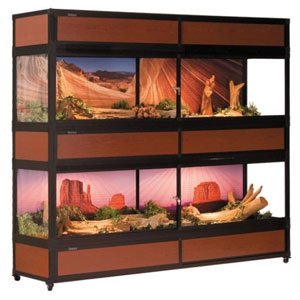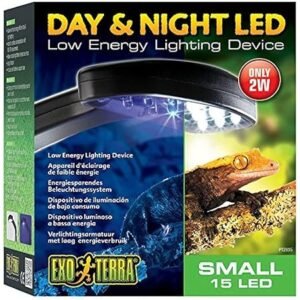Creating the Perfect Cage for Your Chameleon: A Comprehensive Guide
Understanding Chameleons and Their Needs
chameleon reptile cage ,Chameleons, known for their remarkable color-changing abilities and distinctive physical traits, make fascinating companions for reptile enthusiasts. Originating primarily from tropical and subtropical regions, these creatures thrive in diverse environments ranging from lush forests to arid deserts. To successfully care for a chameleon in captivity, it’s crucial to recognize and replicate the environmental conditions that they naturally encounter.
Temperature is a critical factor in a chameleon’s habitat. Typically, they require a temperature gradient within their enclosure, allowing them to bask in warmer areas while retreating to cooler zones. A basking spot should ideally reach temperatures ranging from 85°F to 95°F, while cooler areas should be maintained between 70°F to 80°F. Proper temperature regulation not only aids in their digestion but also contributes to their overall health and activity levels.
Humidity is another significant requirement for chameleons. These reptiles thrive in environments with moisture levels between 50% and 70%, depending on the species. To maintain an optimal humidity level, regular misting is essential. This mimics their natural habitat and provides them with necessary hydration through both skin absorption and drinking droplets. Implementing a combination of live plants and appropriate substrates can further enhance humidity retention within the cage.
Lighting plays a vital role as well. Chameleons need both ultraviolet (UV) light for vitamin D synthesis and visible light for their general well-being. Providing a proper UVB light source for 10 to 12 hours each day is crucial, as it helps prevent metabolic bone disease, a common ailment among chameleons kept in inadequate lighting conditions. Furthermore, incorporating various levels of space within the enclosure is important. Chameleons need ample climbing structures and hiding spots to feel secure and mimic their natural behavior, ensuring they can bask, move, and retreat as needed.
In summary, understanding the unique needs of chameleons involves an appreciation for their natural habitats and lifestyles. By creating conditions that closely resemble their wild environments, including precise temperature control, adequate humidity, sufficient lighting, and ample space for movement, it is possible to provide a healthy and stress-free home for these remarkable reptiles.
Choosing the Right Cage Size and Type
chameleon reptile cage ,When selecting a cage for a chameleon, several factors must be taken into account to ensure a comfortable habitat that promotes the animal’s health and well-being. Chameleons are arboreal creatures, meaning they thrive in environments where they can climb and explore vertical space. Therefore, the cage should be tall rather than wide, providing ample vertical room for climbing. A suitably sized cage encourages natural behaviors and reduces stress.
There are primarily three types of enclosures suitable for chameleons: mesh, glass, and plastic. Mesh cages are particularly beneficial due to their excellent ventilation and airflow, which help to maintain the humidity levels that chameleons require. The mesh structure also allows for easy visibility, enabling pet owners to monitor their pets without causing disturbance. Glass enclosures, on the other hand, offer a more visually appealing habitat and are better at retaining heat and humidity. However, they can be challenging to ventilate adequately, which may lead to stagnant air if not carefully managed. Plastic cages, while lighter and easier to clean, might not provide the necessary ventilation or space for climbing that chameleons need.
When determining the appropriate cage size, it is vital to consider the specific species of chameleon. For example, a veiled chameleon requires a minimum enclosure size of 24” x 24” x 48”, while a panther chameleon may need similar or even larger dimensions depending on its age and growth. If multiple chameleons are to be housed together, adequate space must be provided to avoid aggression and stress. Each chameleon should have its own climbing areas and basking spots to mitigate territorial disputes. Consider integrating features such as branches, leaves, and plants within the cage to create a stimulating environment that encourages exploration and healthy activity. Choosing the right size and type of cage is essential for the physical and mental well-being of your chameleon.
Creating an Optimal Habitat: Layout and Accessories
Designing a suitable cage for your chameleon involves carefully considering its natural habitat and incorporating essential elements to meet its physical and psychological needs. Since chameleons are arboreal creatures, the interior of their cage should prominently feature branches of varying thicknesses and lengths. These branches will allow your chameleon to climb, bask, and navigate its environment, mimicking the tree canopies of their natural surroundings. It is beneficial to position these branches at different heights to create a dynamic environment and provide your pet with multiple levels to explore.
In addition to branches, foliage is crucial for your chameleon’s well-being. Live or artificial plants can provide necessary coverage for hiding, which is important for combating stress. Incorporating a variety of leaf shapes and sizes will not only enhance the aesthetic appeal of the enclosure but also create a more realistic and enriching habitat. Additionally, consider the placement of plants to allow for open basking areas; these spaces are essential for thermoregulation and overall health.
The substrate used in the cage is another important factor that contributes to a healthy environment. While many chameleon owners prefer to use a clean, non-toxic liner for easy maintenance, others choose to utilize organic substrates that facilitate moisture retention and ground cover. Ensure that whatever material you choose allows for drainage and prevents the buildup of waste, as cleanliness is vital in preventing health issues.
Finally, providing essential amenities such as a shallow water dish or a drip system, along with proper heating and UVB lighting, is key to creating an optimal habitat. These components help regulate temperature and humidity, ensuring your chameleon remains active and healthy. Regular maintenance of any accessories and monitoring of environmental conditions will contribute to a safe and comfortable space for your chameleon to thrive.
Maintaining the Cage Environment: Routine Care and Monitoring
chameleon reptile cage ,Maintaining a suitable cage environment for your chameleon is crucial for its health and well-being. Regular cleaning protocols should be established to prevent the accumulation of waste and bacteria that can lead to illness. A thorough cleaning of the cage should be performed weekly, which includes removing uneaten food, waste, and any mold that may develop. The surfaces of the cage, including fixtures and decor, should be sanitized with a reptile-safe cleanser to ensure a hygienic habitat.
Monitoring humidity and temperature levels is equally important. Chameleons thrive in specific temperature ranges and humidity levels, which can fluctuate due to various factors. A reliable thermometer and hygrometer should be utilized to keep track of these parameters consistently. The ideal basking temperature for most chameleon species ranges between 80°F and 90°F, while the cooler side of the habitat should be between 70°F and 75°F. Humidity levels typically need to be maintained between 40% and 70%, depending on the specific chameleon species. Regular misting of the cage can help achieve these humidity levels, but care should be taken to avoid over-saturation.
Proper lighting is another significant aspect of cage maintenance. A combination of UVB and basking lights should be employed to simulate natural sunlight, which is essential for the chameleon’s metabolic processes. The bulbs should be replaced as per manufacturer recommendations, usually every six months, to ensure optimal UVB exposure. Additionally, observing your chameleon for any signs of stress or illness is key. Indicators such as lethargy, changes in appetite, or abnormal coloration can suggest issues that may need immediate attention.
Creating a routine check schedule for these factors can greatly enhance your chameleon’s habitat. Regularly assessing cleaning needs, temperature readouts, and overall health can provide proactive insights into any necessary adjustments. This routine not only nurtures a comfortable living environment but also promotes the longevity and happiness of your chameleon.





